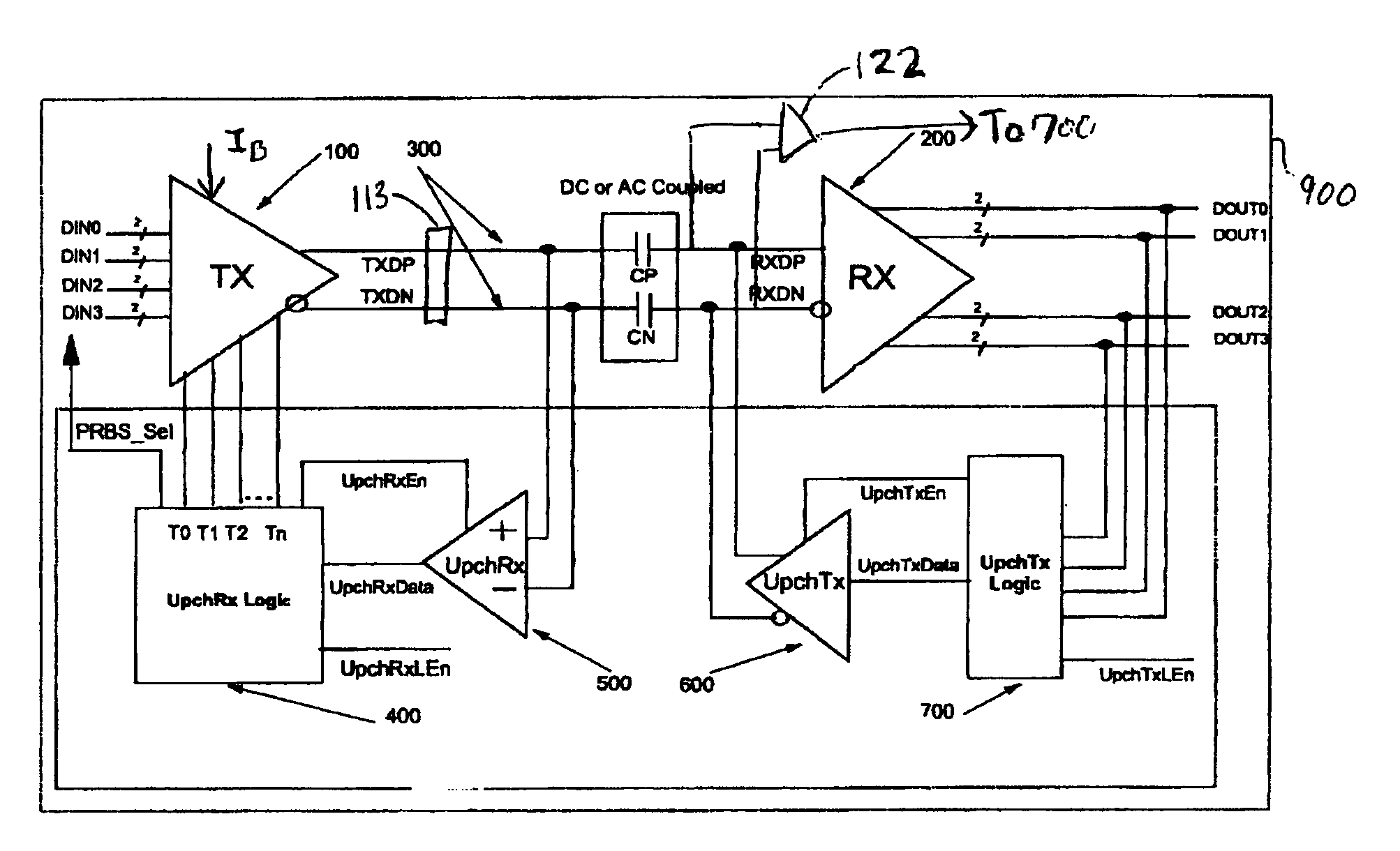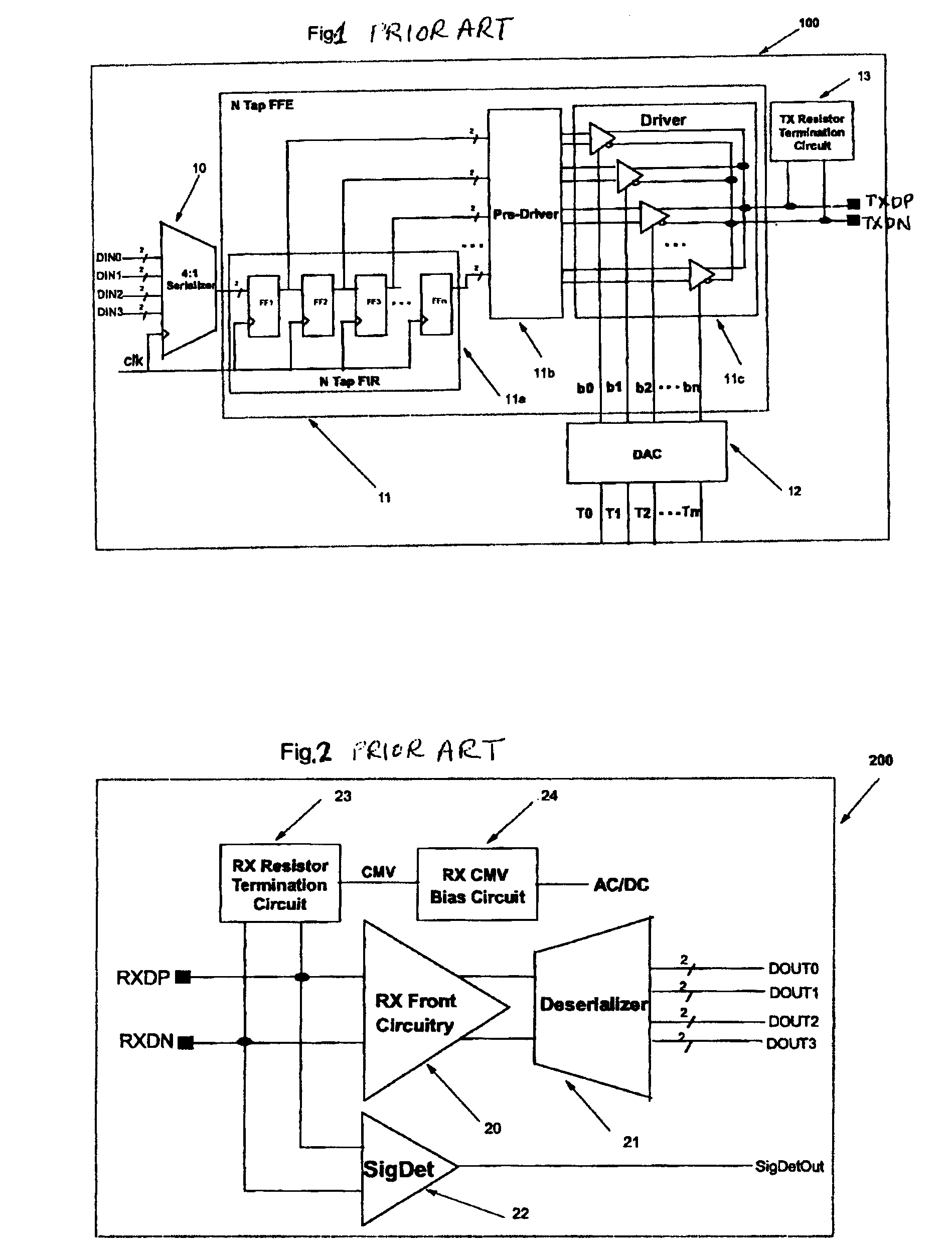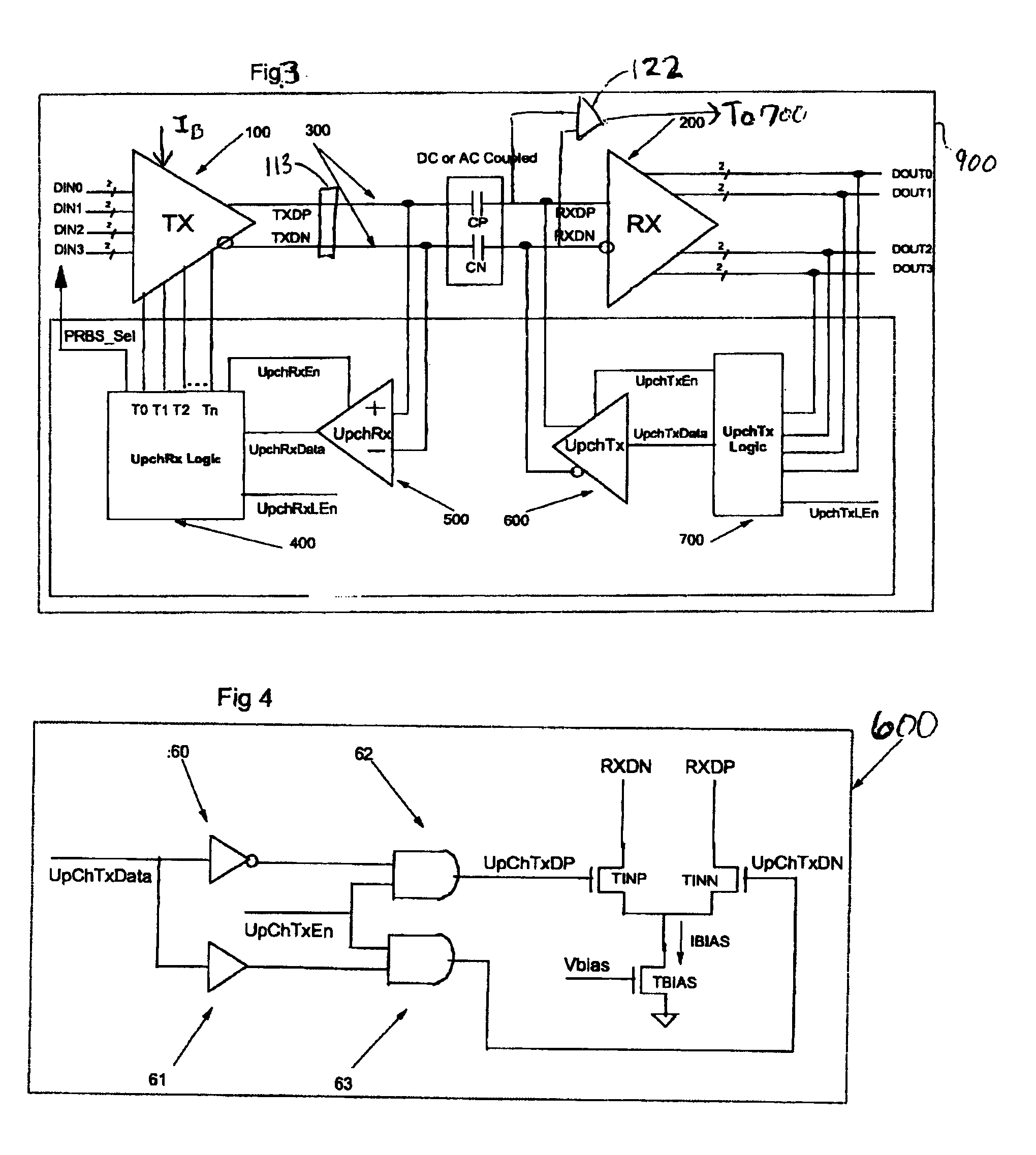Automatic adaptive equalization method and system for high-speed serial transmission link
- Summary
- Abstract
- Description
- Claims
- Application Information
AI Technical Summary
Benefits of technology
Problems solved by technology
Method used
Image
Examples
Embodiment Construction
[0037]FIG. 3 is a block diagram illustrating a high-speed serial data transmission system 900 in accordance with an embodiment of the present invention. The system shown on FIG. 3 is called an automated adaptive equalization system. Such system includes a common data transmitter 100 and a common data receiver 200. Parallel input data DIN0, DIN1, DIN2, and DIN3 are supplied to the data transmitter 100, which serializes and outputs the data serially as high-speed differential data signals TXDP and TXDN. These signals are transmitted downstream to the data receiver 200 through a non-ideal transmission channel 300. The differential data signals RXDP and RXDN represent these signals, as modified by passage through the transmission channel 300. The data receiver 200 receives serialized high-speed differential data signals RXDP and RXDN from the transmission channel 300 and de-serializes the received data therefrom back to a parallel format as data signals DOUT0, DOUT1, DOUT2, and DOUT3. T...
PUM
 Login to View More
Login to View More Abstract
Description
Claims
Application Information
 Login to View More
Login to View More - R&D
- Intellectual Property
- Life Sciences
- Materials
- Tech Scout
- Unparalleled Data Quality
- Higher Quality Content
- 60% Fewer Hallucinations
Browse by: Latest US Patents, China's latest patents, Technical Efficacy Thesaurus, Application Domain, Technology Topic, Popular Technical Reports.
© 2025 PatSnap. All rights reserved.Legal|Privacy policy|Modern Slavery Act Transparency Statement|Sitemap|About US| Contact US: help@patsnap.com



